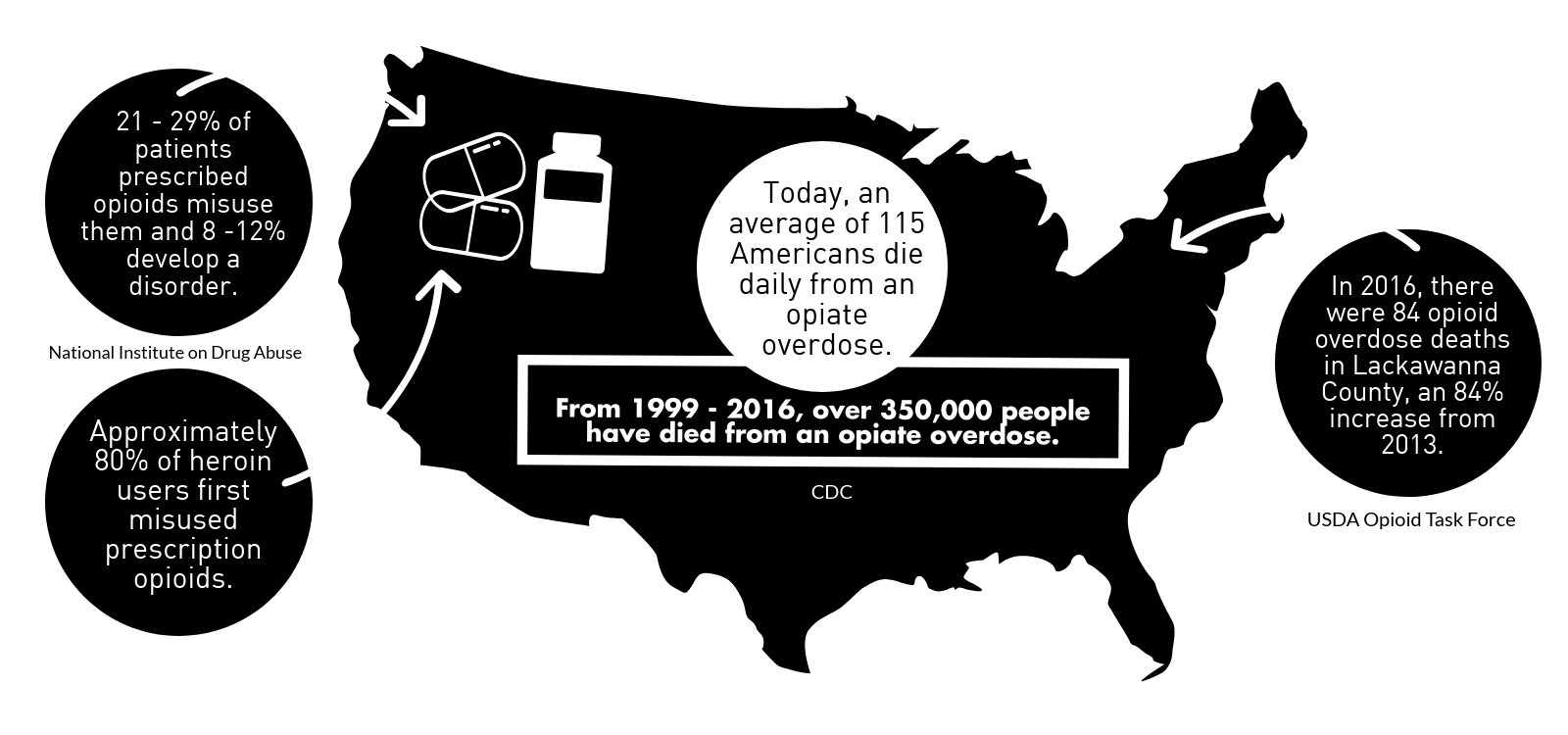International Overdose Awareness Day, August 31, 2018
Special Feature “ Health & Exercise Forum” with Geisinger Commonwealth School of Medicine the 3rd Monday of every month!
Guest Columnist: Sana Chughtai, MD2
Sana Chughtai is a second year medical student at Geisinger Commonwealth School of Medicine from Pittsburgh, PA. She received a Bachelor of Science in Biological Engineering from Purdue University in 2017. Her current interests in medicine include preventative medicine and health education.
“I’m addicted!” It’s a phrase many of us use loosely, whether we’re referring to our favorite snack or our newfound love for a TV show. For some though, the addiction is real. Here in northeastern Pennsylvania the opioid crisis has only gone from bad to worse. Before we can understand the scope of the crisis, we must understand how addiction works. What changes within our bodies and our brains that sparks the start (and continuation of) an addiction?
Whether or not addiction is truly considered a disease is still debated amongst experts in the field, but what is mutually agreed upon is that there are changes in the brain. The first time may have been a choice, but subsequent engagement involves the alteration of normal processes of the brain.
The basal ganglia is often referred to as the brain’s reward circuit. The continuous use of certain drugs, including opiates, over-activates this center, producing what most addicts refer to as a drug high. With repeated exposure of this circuit by the same substance, tolerance is developed. This means that the basal ganglia’s sensitivity is reduced, making it difficult for drug users to feel pleasure from healthy activities that used to bring pleasure before the initiation of drug use. This is one of the factors that leads to dependence, since addicts struggle to feel pleasure from anything other than the drugs they use.
The extended amygdala is involved in handling stressful emotions and is primarily responsible for the feelings of withdrawal. Unlike the basal ganglia, the sensitivity of this area is increased with repeated drug use. This leads to drug-seeking behavior to reduce the unwanted discomfort of withdrawal symptoms.
The prefrontal cortex of the brain is involved in impulse control. Extended drug use can impact the ability of the prefrontal cortex to function properly, leading to impulsive drug-seeking behavior.
 It is also important to understand the role of dopamine in drug addiction. Dopamine is a neurotransmitter, meaning it is a substance released from one neuron (a cell in the nervous system) to act on another. When a person engages in a pleasurable activity, neurons release bursts of dopamine, signaling the brain to associate that particular activity with positive feelings. The purpose of doing so is to form habits and reflexes that increase the frequency of the activity that produces pleasure. Drugs produce larger bursts of dopamine than other, normal routine activities, leading to the formation of the habit.
It is also important to understand the role of dopamine in drug addiction. Dopamine is a neurotransmitter, meaning it is a substance released from one neuron (a cell in the nervous system) to act on another. When a person engages in a pleasurable activity, neurons release bursts of dopamine, signaling the brain to associate that particular activity with positive feelings. The purpose of doing so is to form habits and reflexes that increase the frequency of the activity that produces pleasure. Drugs produce larger bursts of dopamine than other, normal routine activities, leading to the formation of the habit.
There are generations of people that continue to believe that addiction is the result of immorality and weakness and that a strong sense of willpower is all that is needed to overcome it. So many of us are quick to blame addicts for their situations, hindering our ability to truly see it as an affliction that requires legitimate treatment.
Take a lifelong smoker who develops lung cancer for example. The way family, friends, and community members react to this news differs greatly from how many would react if that same individual was acknowledged to suffer from addiction instead. With a cancer diagnosis typically comes feelings of empathy and focus on treatment, while learning of someone’s addiction tends to bring feelings of blame and shame.
But why? People don’t tend to blame the cancer patient for developing his or her cancer, even if their decision to smoke contributed to its development. People do however tend to scrutinize an individual’s addiction and the choice (or series of choices) that led to their dependence.
It’s not always that simple though. Although the term addiction tends to elicit the stereotypical profile of who an addict is, addiction is an affliction that transcends the boundaries of age, sex, skin color, and household income. While many drug addicts’ addictions are a result of illicit drug use, addiction for many others begins with a prescription medication in the absence of any initial illicit activity.
Addiction is a complex issue that requires a complex solution. A simple first step we can all take is to put aside our preconceived notions and cookie-cutter mental images of who addicts are and what addiction entails. We must first change the way we see those who are affected so that we can properly help them in the hopes of improving not only their lives but the lives of family, friends and all those in the communities that have been affected by this plague.
For More Information:
NEXT WEEK: Part 2 of 2, Addiction and Pain Management Alternatives
Read Dr. Mackarey’s Health & Exercise Forum – every Monday. This article is not intended as a substitute for medical treatment. If you have questions related to your medical condition, please contact your family physician. For further inquiries related to this topic email: drpmackarey@msn.com
Paul J. Mackarey PT, DHSc, OCS is a Doctor in Health Sciences specializing in orthopaedic and sports physical therapy. Dr. Mackarey is in private practice and is an associate professor of clinical medicine at Geisinger Commonwealth School of Medicine.